How to Support Emotional Growth Through ABA Therapy Techniques

Understanding ABA and Its Role in Emotional Development
Applied Behavior Analysis (ABA) is a widely recognized, evidence-based approach used to support emotional growth in children, particularly those with developmental challenges such as autism spectrum disorder. While traditionally associated with behavior management, ABA also emphasizes fostering emotional recognition, regulation, and resilience through structured, individualized strategies. This article explores how ABA techniques can be implemented to promote emotional development, the ethical considerations involved, and the current research supporting its efficacy.
ABA Techniques for Supporting Emotional Growth in Children
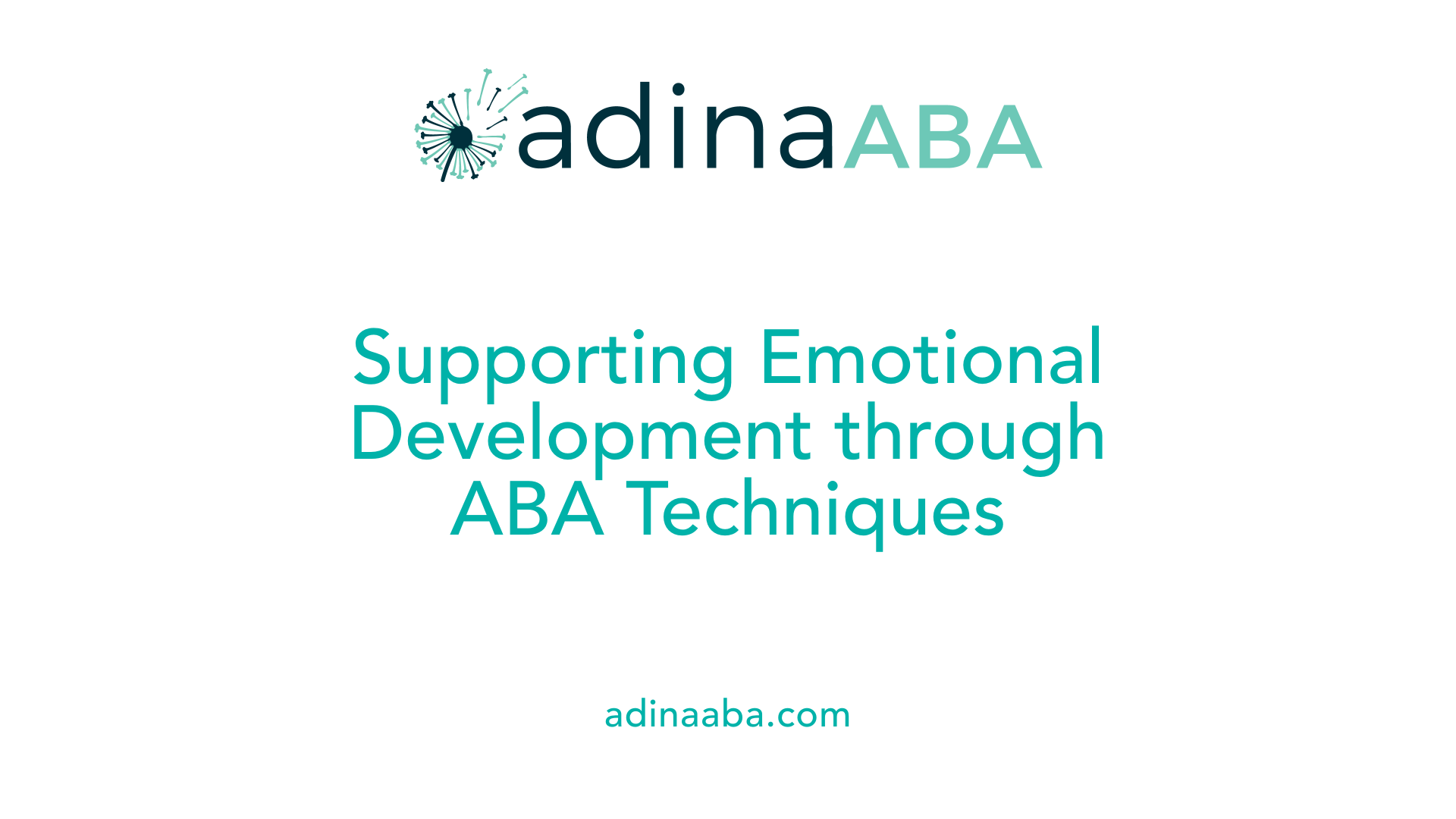
What is behavioral activation and how does it help with mood disorders?
Behavioral activation (BA) is a form of therapy that focuses on encouraging individuals to participate in activities that bring enjoyment and satisfaction. It aims to improve mood by increasing positive interactions with the environment. This approach is based on the idea that depression often results from a lack of reinforcement, meaning that individuals aren't receiving enough positive stimuli or rewards from their surroundings.
How does behavioral activation work?
BA involves understanding specific behaviors that contribute to an individual's mood. Therapists help clients identify avoidance patterns and replace them with engaging activities to increase environmental reinforcement. One method includes creating a hierarchy of activities ranked by difficulty, which guides clients step-by-step through gradually more challenging rewarding activities. To track progress, some therapists use token economies—systems where clients earn tokens for completing activities, which can later be exchanged for rewards.
What are different approaches within behavioral activation?
Another notable approach is called ACTION. It helps clients understand how their actions influence their emotions. Through self-monitoring tools, clients can recognize dysfunctional patterns and work on replacing them with healthier behaviors. This method promotes active engagement with emotional self-awareness and adaptive responses.
Evidence supports BA's effectiveness
Research demonstrates that behavioral activation significantly reduces symptoms of depression. Meta-analyses have shown that it often outperforms control treatments and is comparable in effectiveness to medication. Additionally, BA strategies have proven helpful in addressing anxiety by targeting avoidance behaviors and encouraging adaptive, rewarding activities.
Are there innovative methods to deliver behavioral activation?
Emerging technologies like virtual reality are being explored to make BA more accessible. These methods allow for remote delivery and controlled environments to practice skills such as exposure therapy, role-playing, and social skills training. Such innovations aim to expand the reach of behavioral activation and improve treatment outcomes.
Strategies and Methods in ABA to Foster Emotional Development
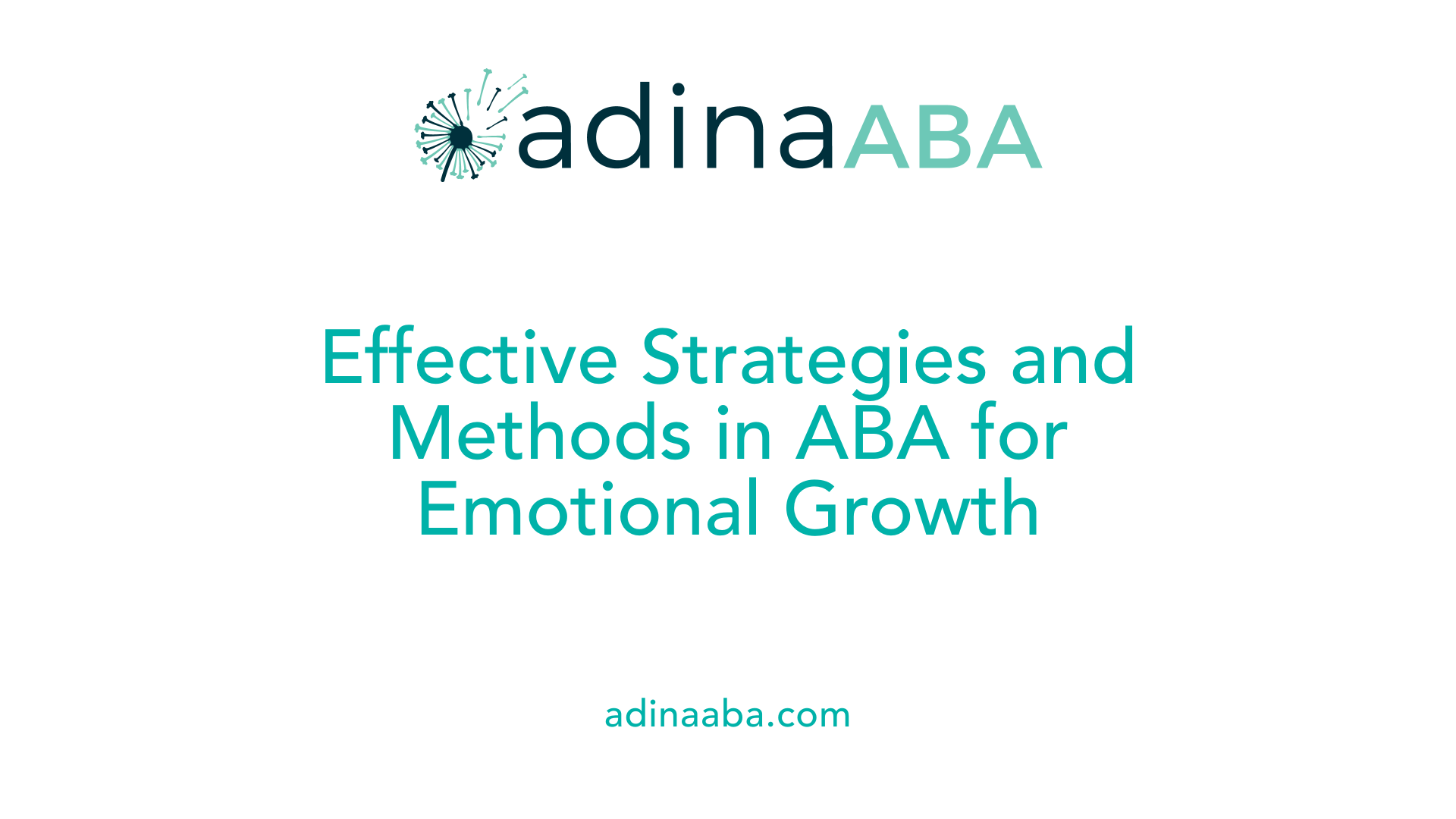
What are the strategies and methods used in ABA therapy to promote emotional development?
Applied Behavior Analysis (ABA) utilizes a variety of techniques to support emotional growth, especially in children with developmental challenges. Visual aids such as emotion charts and social stories are fundamental tools that help children recognize and understand different emotions. These supports provide visual cues that facilitate emotional literacy, making abstract feelings more concrete.
Therapists deploy behavioral procedures like reinforcement, modeling, chaining, and task analysis to teach emotional regulation and social skills. Reinforcement encourages positive emotional responses by rewarding adaptive behaviors, while modeling lets children observe and imitate appropriate ways to express feelings. Chaining helps build complex emotional responses step-by-step, and task analysis breaks down emotional skills into manageable components.
Assessment plays a crucial role in tailoring interventions. Guided evaluations identify the child's specific emotional strengths and challenges, allowing therapists to design personalized strategies that target issues like emotional recognition, regulation, social awareness, and communication.
Incorporating multisensory teaching techniques and mindfulness practices further enhances emotional regulation. These methods engage multiple senses to help children stay present and reduce anxiety or impulsivity. Sensory integration activities support emotional balance by addressing sensory sensitivities.
Cognitive-behavioral tools, such as worksheets and social stories, are used to promote self-awareness and problem-solving. These resources assist children in practicing emotional recognition and developing coping strategies in various social contexts.
Overall, ABA promotes emotional development by systematically teaching children to identify their feelings, understand others' emotions, and respond appropriately. Through consistent practice and reinforcement, children learn to generalize these skills across different settings, fostering greater emotional resilience and social competence.
The Impact of ABA on Children’s Emotional Well-Being
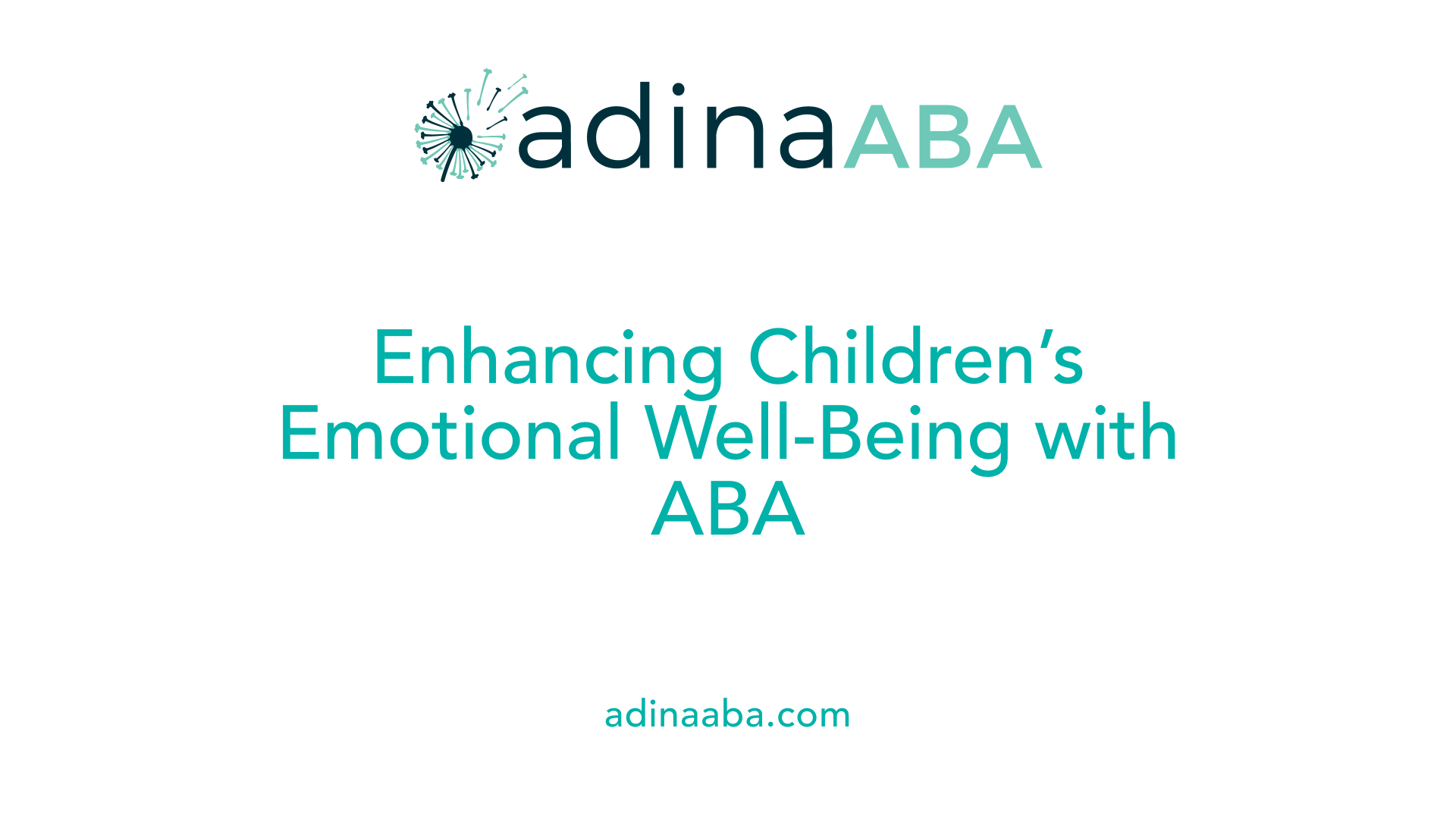
How does ABA therapy contribute to emotional well-being in children?
Behavioral Activation (BA), often integrated into broader ABA (Applied Behavior Analysis) practices, plays a significant role in supporting children’s emotional health. By focusing on enhancing positive behaviors and reducing avoidance, ABA helps children better regulate their emotions. Through tailored strategies, children learn to manage feelings more effectively, which can lower levels of anxiety and frustration.
ABA emphasizes creating structured plans that reinforce adaptive behaviors. For example, children may be taught to recognize their emotional triggers and develop coping mechanisms. These plans often include methods like positive reinforcement, where desirable behaviors are encouraged through rewards, fostering a sense of achievement and self-control.
By systematically strengthening social skills and emotional regulation abilities, ABA helps children navigate their environments more confidently. This not only reduces challenging behaviors but also boosts their self-esteem. As children learn to communicate their needs and handle social interactions better, they develop a stronger sense of competence and resilience.
Additionally, ABA frameworks often involve real-world practice. Children are guided to apply their skills across various settings, encouraging transferability of learned behaviors. This comprehensive approach promotes emotional stability and supports overall mental health.
In summary, ABA contributes to children’s emotional well-being by building a foundation of positive behaviors, reinforcing emotional regulation, and enhancing social skills. These benefits foster greater emotional resilience and a balanced mood—crucial components for healthy development.
The Connection Between ABA Techniques and Social-Emotional Learning (SEL)
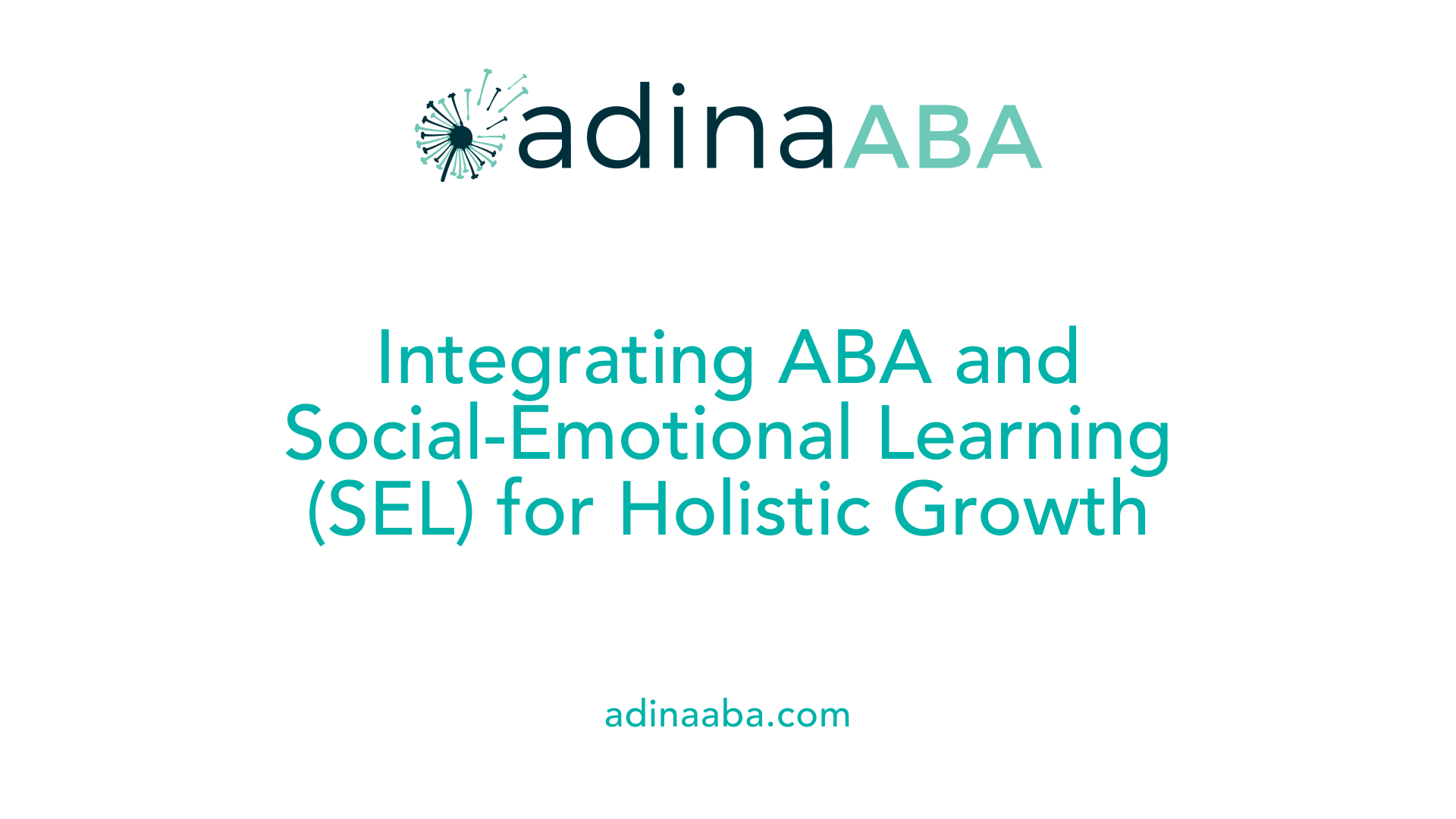
What is the relationship between ABA techniques and social-emotional learning?
Applied Behavior Analysis (ABA) and social-emotional learning (SEL) are closely interconnected disciplines that aim to develop vital social and emotional skills in children. ABA focuses on understanding individual behaviors and using targeted interventions, which include social skills training, emotional recognition, and self-regulation techniques. These strategies directly support SEL components such as self-awareness, social awareness, and responsible decision-making.
While SEL encourages children to understand and empathize with others and to make responsible choices, ABA provides measurable and personalized methods to teach these skills effectively. For children with developmental delays or autism spectrum disorder, ABA offers structured approaches like reinforcement and modeling that help promote positive social behaviors and emotional understanding.
Both approaches often blend in practice. Common strategies include role-playing, video modeling, and reinforcement systems, all designed to encourage social interaction and emotional growth. This overlap allows parents, educators, and clinicians to craft comprehensive programs that cater to a child’s specific needs. Overall, ABA techniques not only support SEL objectives but also strengthen emotional and social competencies through evidence-based interventions.
How do measurable interventions support SEL goals?
ABA emphasizes the use of clear, measurable interventions to track progress precisely. For example, creating hierarchies of social skills from simple to complex allows practitioners to monitor improvements over time. Token economies and tracking sheets help reinforce positive behaviors, fostering an environment where children can reliably learn socially appropriate responses and emotional regulation.
Such data-driven methods improve the efficiency of interventions, ensuring that children gradually build their social-emotional capacities with tangible evidence of development. These interventions have been shown to be effective in reducing social and emotional difficulties, particularly in clinical populations.
How are social skills training and emotional recognition integrated?
Social skills training in ABA often involves teaching children how to recognize emotions in themselves and others through visual aids, role-playing, and direct feedback. Developing these skills is core to SEL, which seeks to foster empathy and meaningful peer relationships. In ABA, emotional recognition is reinforced through specific exercises where children learn to identify facial expressions, tone of voice, and body language.
Such targeted training improves children’s ability to navigate social environments and respond appropriately, laying the foundation for responsible decision-making and empathy.
How does ABA foster empathy and responsible decision-making?
ABA promotes empathy and responsible decision-making by systematically reinforcing behaviors that demonstrate understanding and consideration for others. Interventions can include social stories, scenario-based role-playing, and reinforcement of prosocial behaviors. By consistently rewarding empathetic responses, children internalize these behaviors, leading to more responsible social interactions.
How can these strategies enhance social interactions and emotional growth?
Implementing ABA strategies that focus on social engagement and emotional regulation improves interactions with peers and adults. Over time, children develop better ways to express their feelings, understand others' perspectives, and respond responsibly in social settings.
| Aspect | Description | Example Practices |
|---|---|---|
| Social Skills Development | Teaching appropriate interpersonal behaviors and emotional cues | Role-playing, social stories |
| Emotional Recognition | Identifying and understanding emotions in oneself and others | Facial expression matching, tone recognition |
| Reinforcement Strategies | Using rewards to strengthen positive social behaviors | Token economies, praise systems |
| Empathy and Responsibility | Fostering caring behaviors and responsible choices | Social narratives, prosocial reinforcement |
Both ABA and SEL aim to support children’s overall social and emotional well-being, often working hand-in-hand to produce more effective developmental outcomes.
Supporting Emotional Resilience and Regulation with ABA Strategies
How can ABA techniques be implemented to support emotional resilience and regulation?
Applied Behavior Analysis (ABA) offers practical methods to help children develop better emotional resilience and regulation. One effective approach involves using visual supports, such as emotion charts and social stories, to teach children to recognize, label, and understand their feelings. These visual tools make abstract emotions more concrete, facilitating better emotional literacy.
Structured interventions are also essential. Techniques like task analysis break down complex behaviors into small, manageable steps. For example, children can learn to use coping strategies such as deep breathing, sensory tools, or self-soothing techniques through modeling and role-playing activities. These strategies help children manage their emotional responses in challenging situations.
Reinforcement plays a vital role in encouraging positive emotional behaviors. Praising children or providing access to preferred activities when they demonstrate appropriate responses reinforce their ability to regulate emotions effectively. Establishing predictable routines and routines reduces anxiety and creates a sense of safety, which is fundamental for emotional regulation.
Family involvement ensures these skills are consistent across settings. Caregivers and educators working together can reinforce strategies and ensure that children practice emotional regulation skills in various environments, promoting generalization. This collaborative effort maximizes the benefits of ABA strategies.
Combining visual supports, sensory tools, and behavioral techniques makes ABA a comprehensive approach for fostering emotional resilience. By tailoring interventions to each child's needs, ABA helps children build confidence, manage their emotions, and respond adaptively to life's challenges.
Educational Approaches in ABA for Supporting Emotional Growth
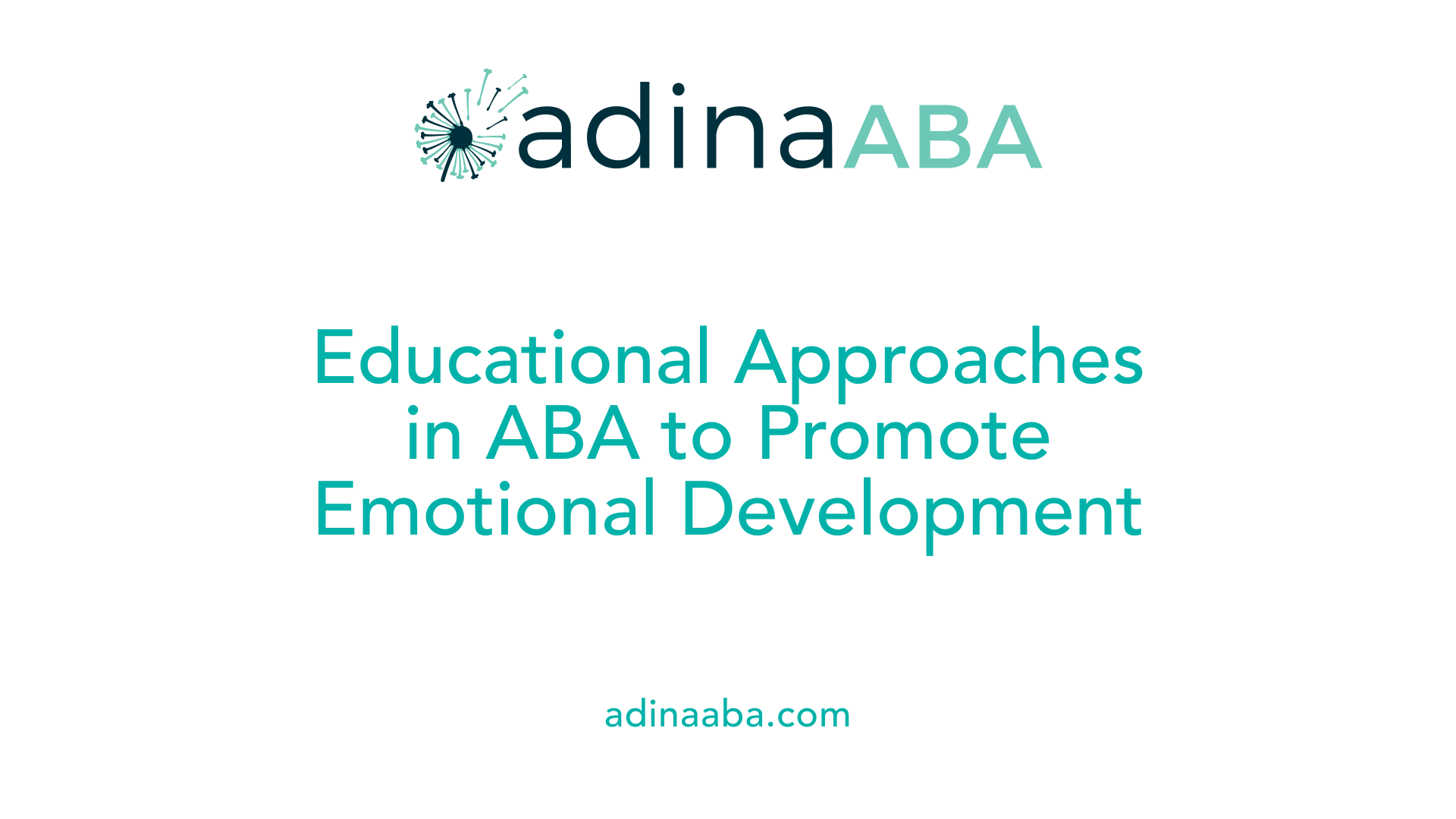
How can ABA therapy facilitate emotional growth through educational approaches?
Applied Behavior Analysis (ABA) pursues emotional growth by systematically teaching children how to recognize, comprehend, and regulate their emotions. This is achieved through organized, evidence-based techniques tailored to each child's needs.
Therapists often employ modeling and positive reinforcement to demonstrate appropriate emotional responses and encourage practice. For example, a therapist may model calming techniques or express empathy in a way that children can imitate. Task analysis helps break complex emotional skills into manageable steps, making learning achievable.
Incorporating social skills training enhances children's awareness of social cues and helps build empathy and understanding. Activities like social storytelling and role-playing enable children to practice real-life interactions in a safe environment.
By integrating Social Emotional Learning (SEL) principles, ABA supports self-awareness, emotional self-management, and responsible decision-making. These skills foster better social interactions, resilience, and emotional intelligence.
Overall, ABA creates a comprehensive approach combining behavioral strategies and emotional education. This not only addresses immediate behavioral challenges but also promotes steady emotional development over time. Therapy sessions become opportunities for children to learn, practice, and grow emotionally, leading to more positive social and personal outcomes.
| Strategy | Description | How It Supports Emotional Growth |
|---|---|---|
| Recognition of emotions and social cues | Teaching children how to identify emotions in themselves and others | Fosters empathy and social awareness |
| Modeling and social storytelling | Demonstrating appropriate responses through storytelling and role-playing | Improves understanding of social contexts, builds relationships |
| Empathy development | Activities encouraging children to understand and share feelings | Enhances compassionate interactions |
| Social Emotional Learning (SEL) principles | Applying structured frameworks to teach self-awareness and responsible decision-making | Promotes emotional regulation and resilience |
| Progressive skill-building across settings | Gradually increasing complexity of social and emotional tasks in different environments | Strengthens generalization and independence |
By combining these targeted strategies, ABA offers a powerful approach to nurturing emotional growth, setting children on a path toward healthier social relationships and greater emotional competence.
Ethical Considerations in Applying ABA for Emotional Support
What are the ethical considerations when applying ABA therapy for emotional support?
When using Applied Behavior Analysis (ABA) to provide emotional support, practitioners must prioritize several ethical principles. Informed consent is fundamental; clients and their families should receive clear information about the treatment's purpose, processes, potential risks, and benefits before beginning therapy.
Respect for client autonomy and dignity is also crucial. Therapists are responsible for ensuring that interventions are tailored to individual needs and culturally responsive, avoiding any practices that may cause harm or violate personal rights.
Adherence to established professional codes, such as those from the Behavior Analyst Certification Board (BACB), guides ethical practice. These codes emphasize beneficence, nonmaleficence, and respecting clients' dignity and preferences.
Maintaining confidentiality is necessary to protect client privacy. Moreover, clinicians should practice within their competence, seek supervision or additional training when needed, and avoid dual relationships that could impair judgment.
Balancing the efficacy of evidence-based ABA techniques with clients' rights involves careful assessment and respect for social justice considerations. Ethical practice entails continuous reflection on potential risks and benefits, ensuring interventions promote well-being without infringing on individual rights or cultural values.
Research suggests that when these principles are upheld, ABA can effectively support emotional well-being while safeguarding ethical standards, fostering trust and positive outcomes in therapy.
Fostering Emotional Growth Responsibly with ABA
Supporting emotional growth through ABA therapy involves integrating individualized, evidence-based techniques, ensuring ethical practice, and fostering social-emotional development. By systematically teaching emotional recognition, regulation, and resilience, ABA can significantly enhance a child's well-being. Collaborating with families and continually updating intervention strategies guarantees that emotional growth is both effective and ethically sound. As research advances, the potential of ABA to nurture emotional health in children continues to grow, offering a comprehensive approach to supporting developmental and emotional needs.
References
- Behavioral activation - Wikipedia
- Ethical Concerns with Applied Behavior Analysis for Autism ...
- Ethical Considerations
- [PDF] Ethics Code for Behavior Analysts - BACB
- Ethics in ABA - Aspire Child & Family Services
- 5 Stages of Social Emotional Learning Skills - ABA in School
- What is Social Emotional Learning (SEL): Why It Matters | NU
- Social Emotional Learning Impact on Student Behavior
- ABA Therapy for Social-Emotional Delays - Award Behavioral Health
- The Controversy Around ABA - Child Mind Institute
More Resources
Expert Clinicians
Get started today ->






